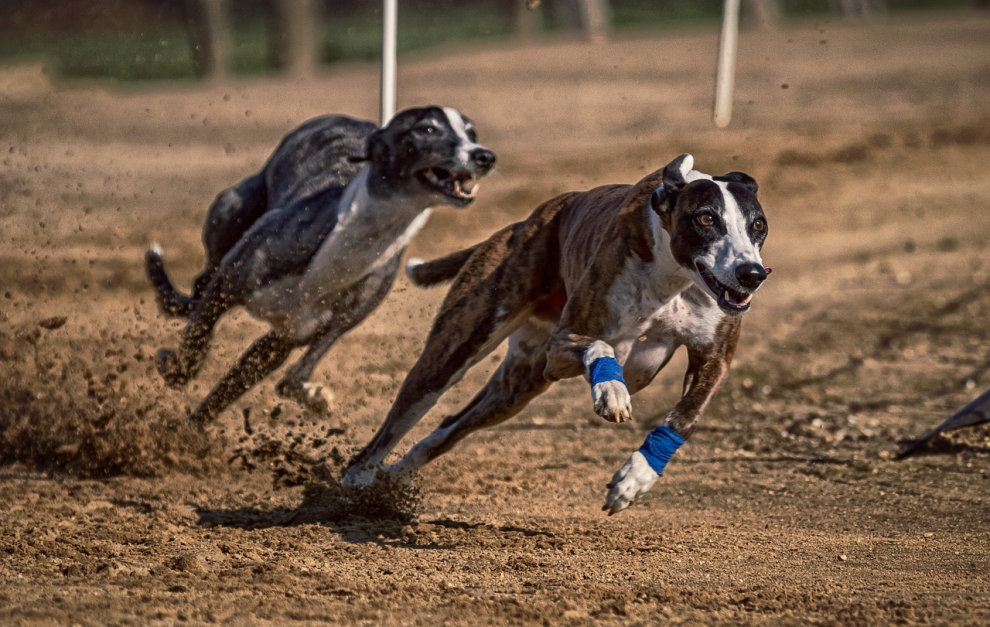Greyhound racing is a thrilling sport that combines the elegance of canine athletes with the excitement of competition and betting. To truly appreciate the sport, it’s essential to understand the intricacies of training and the strategies employed by trainers, as well as how to make informed bets. In this blog, we provide an in-depth look at the world of greyhound racing from the perspectives of trainers and bettors. We cover the training regimen of racing greyhounds, delve into the strategies used by trainers, and offer valuable tips for betting enthusiasts. Plus, we’ve included interviews with experts and success stories to give you a comprehensive guide to the sport.
Training Regimen: Diet, Exercise, and Care
1. Diet and Nutrition
The diet of a racing greyhound is meticulously planned to ensure peak performance. High-quality protein sources such as lean meats and fish form the core of their diet, providing the necessary energy and muscle maintenance. Carbohydrates are also crucial for sustained energy, with rice and oats being common choices. Vitamins and minerals are supplemented to ensure overall health and vitality. Hydration is equally important, with trainers ensuring that their greyhounds have access to fresh water at all times.
2. Exercise and Conditioning
Exercise is a critical component of a greyhound’s training regimen. Daily runs and sprint exercises help build speed, stamina, and muscle strength. Trainers often use specialized equipment like treadmills and swimming pools to vary the training and reduce the risk of injury. Regular walks and play sessions are also essential to keep the dogs mentally stimulated and prevent boredom.
3. Health and Care
Regular veterinary check-ups are mandatory to monitor the health of racing greyhounds. Preventive care, including vaccinations and parasite control, ensures that the dogs remain in top condition. Massage and physiotherapy are commonly used to aid recovery and maintain muscle health. Trainers pay close attention to their greyhounds’ mental well-being, providing a comfortable and stress-free environment.
Training Strategies: Preparing for the Race
1. Tailored Training Programs
Each greyhound is unique, and trainers develop tailored training programs based on individual strengths and weaknesses. This personalized approach helps maximize the potential of each dog. Some greyhounds may excel in sprint distances, while others may be better suited for longer races.
2. Race Simulation
Simulating race conditions during training is a common strategy. This includes practicing starts from the traps and running on tracks that mimic the surfaces of actual racecourses. These simulations help greyhounds become familiar with race conditions and improve their performance on race day.
3. Rest and Recovery
Balancing intense training with adequate rest is crucial. Overtraining can lead to injuries and burnout, so trainers incorporate rest days and recovery periods into the training schedule. This allows the greyhounds to recuperate and maintain peak performance levels.
Betting Tips: Analysing Races and Making Informed Bets
For betting enthusiasts, understanding the nuances of greyhound racing can significantly enhance the betting experience. Here are some tips to help you make informed bets:
1. Analyse Form Guides
Form guides provide detailed information about each greyhound’s past performances, including race times, finishing positions, and track conditions. Look for patterns in performance, such as consistency in placements or improvements over time. Pay attention to the distance and track surface preferences of each greyhound.
2. Consider Trainer and Kennel Form
The reputation and recent performance of trainers and kennels can offer valuable insights. Successful trainers with a history of producing winning greyhounds are worth considering. Similarly, kennels that consistently perform well indicate a high level of care and expertise.
3. Study the Race Conditions
Track conditions, weather, and the draw (starting position) can all impact a greyhound’s performance. Some greyhounds perform better on wet tracks, while others may excel in dry conditions. The draw can also influence race outcomes, as certain positions may offer advantages depending on the track layout.
Expert Insights and Success Stories
To provide deeper insights into greyhound racing, we spoke with renowned trainer John Smith, who has been in the industry for over 20 years. According to John, “The key to success in greyhound racing is understanding each dog’s unique characteristics and tailoring their training accordingly. Consistency, patience, and a lot of care are essential.”
We also caught up with Sarah Johnson, a professional bettor, who shared her strategy: “When it comes to greyhound betting, I focus on the form guides and look for greyhounds that have shown consistent improvement. I also pay attention to the trainer’s track record and the conditions of the race. It’s a combination of research and intuition.”
Greyhound racing is a fascinating sport that requires a deep understanding of training, strategy, and betting. By learning about the diet, exercise, and care routines of racing greyhounds, and understanding the strategies employed by trainers, you can gain a greater appreciation for the sport. For betting enthusiasts, analysing form guides, considering trainer and kennel form, and studying race conditions can enhance your betting experience and increase your chances of success.
With insights from experts and real-life success stories, this comprehensive guide aims to provide you with the knowledge needed to enjoy greyhound racing to the fullest. Whether you’re a seasoned bettor or a newcomer to the sport, the thrill of the race and the potential for winning make greyhound racing an exciting and rewarding experience.











